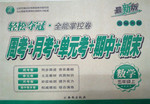题目内容
Mary Allen was my best friend-like the sister I ever had. We did everything together: piano lessons, movies, swimming, and horseback riding.
When I was 13, my family moved away. Mary and I kept in touch through letters and we saw each other on special occasions(场合)- like my wedding and Mary’s. Soon we were busy with children and moving to new homes, and we wrote less often. One day a card that I sent came back stamped "Address Unknown ".
Over the years, I thought of Mary often. I wanted to share stories of my children and then grandchildren. And I needed to share my sadness when my brother and then mother died. There was an empty place in my heart that only a friend like Mary could fill.
One day I was reading the newspaper when I noticed a photo of a young woman who looked a lot like Mary and whose last name was Wagman--Mary’s married name. "There must be thousands of Wagman. "I thought, but I wrote to her anyway.
She called as soon as she got my letter. "Mrs Tobin!" she said excitedly. "Mary Allen Wagman” is my mother. Minutes later I heard a voice recognized immediately,even after 40 years. We laughed and cried and caught up on each other’s lives.
Now the empty place in my heart is filled. And there’s one thing that Mary and I know for sure: We don’t lose each other again.
1. I want to find Mary ______________ .
A. to share my stories B. to share my sorrow
C. to fill the empty in my heart D. all of the above
2.Which of the following is TRUE?
A. We never see each other again when I moved away when I was 13.
B. I find my friend in the newspaper
C. It is 40 years since we last saw each other
D. My friend’s husband is Mr Tobin
3.The best title of the passage is ________
A. My Good Friend B. Friend Like the brother
C. An Important Friend D. Friends Again- Forever
 轻松夺冠全能掌控卷系列答案
轻松夺冠全能掌控卷系列答案
